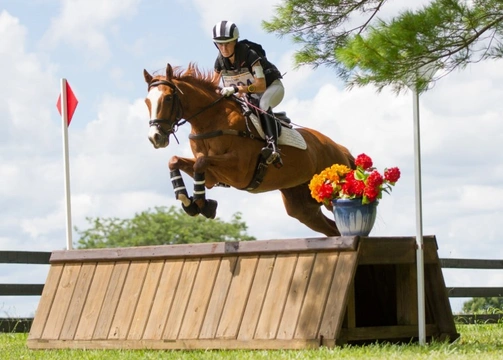
What to know about BE
Is this your first season eventing? What to know about British Eventing
British Eventing is the organisation responsible for horse trials in the UK and if you want to take part in affiliated horse trials then you have to join this sporting discipline.
British Eventing offers a range of membership options and subscriptions but there are other things you will need to pay for.
How to get started with British Eventing
You need to join yourself and then also join your horse or horses. If your horse is owned by someone else then the owner will also need to join or they can transfer horse ownership to you just for the purposes of eventing competitions.
How does it work?
The entry point for British Eventing is called the Grass Roots with courses at 80, 90 and 100. The rulebook explains what is included in each level and most riders start at BE80 or BE90 – there are eligibility criteria for the higher levels to protect horse and rider safety.
BE80 is usually described as BE80T with the ‘T’ standing for ‘training’. This level is supported by a network of BE coaches who offer course walks for both show jumping and cross-country and are available in all of the warm-up areas on the day of competition for help and advice.
What kit will you need for your horse?
Most riders have two separate saddles and bridles for the dressage and jumping disciplines – check the BE rulebook to see which bits and nosebands are legal for each phase
Studs are fairly essential as remember, your dressage and show jumping will probably be on grass, only a few venues will offer either or both of these disciplines on a surface and you will almost certainly want them for the cross-country phase. Your farrier will create stud holes when your horse is shod and these are kept blocked with either special stud fillers or some cotton wool although some people do leave them open. The stud holes are cleaned out before use and different types of stud can be fitted depending on whether the ground is hard or soft
A range of protective boots for show jumping and cross-country and for the dressage warm-up – no form of protective leg wear is permitted during the actual dressage test
Rider Equipment
Most riders will have much of the equipment required for horse trials but there are some special items and requirements to be aware of:-
Some riders will have a change of jacket from dressage to show jumping although just one jacket – either tweed or a solid colour, usually black or navy – is also fine
You will need a number bib which will hold your number on your front and your back – this is worn for all three disciplines and the number will be supplied to you on the day
Your hat must comply with current safety standards as set out in the Rulebook. It will need to be tagged at your first event. The hat is checked by a BE official and then a visible tag applied to the hat harness
Body protectors must also comply with current rules although these are not checked in the same way that hats are
A medical armband is required for the cross-country phase. This contains essential personal information and is worn on the arm with the wallet to the outside so this data can be easily retrieved by paramedics in the event of a rider fall or accident
How to enter
British Eventing has a list of fixtures on their website and you can see at a glance when schedules are available and then when entries open. There are quite complex rules about entries particularly if an event is oversubscribed so it is worth familiarizing yourself with these on the BE website.
You will need to enter before the ballot date. The ballot date is used to streamline entries if a particular competition has too many competitors. To enter, you will need to purchase a season ticket for your horse which will give different types of entry criteria and can affect your likelihood of getting in at a popular venue.
The entry is done online and, with a pre-purchased season ticket and a registered horse, is quick and simple to do. The entry at BE100 level and below will be between £80 and £90 per horse and there is also a start fee payable on the day, usually around £15-£17 but this depends on the level of competition.
Entries are usually taken as confirmed once the ballot date is passed – if you are balloted out, you will be informed. Section times are listed about a week before the competition for rider guidance and then the exact times are published two or three days before the competition. Each discipline is allocated a specific time – some venues stick to these rigidly but others are more flexible and if you turn up roundabout your time to warm up, they will take you when you are ready. Dressage is the exception to this usually.
Top Tips
- You must learn your dressage test – callers are never permitted
- You can warm up with a schooling whip but cannot carry a schooling whip during the dressage test
- Go and watch some local BE events or try and find someone who events that you can groom for. This will give you a really valuable insight into what’s involved and how the whole process works



